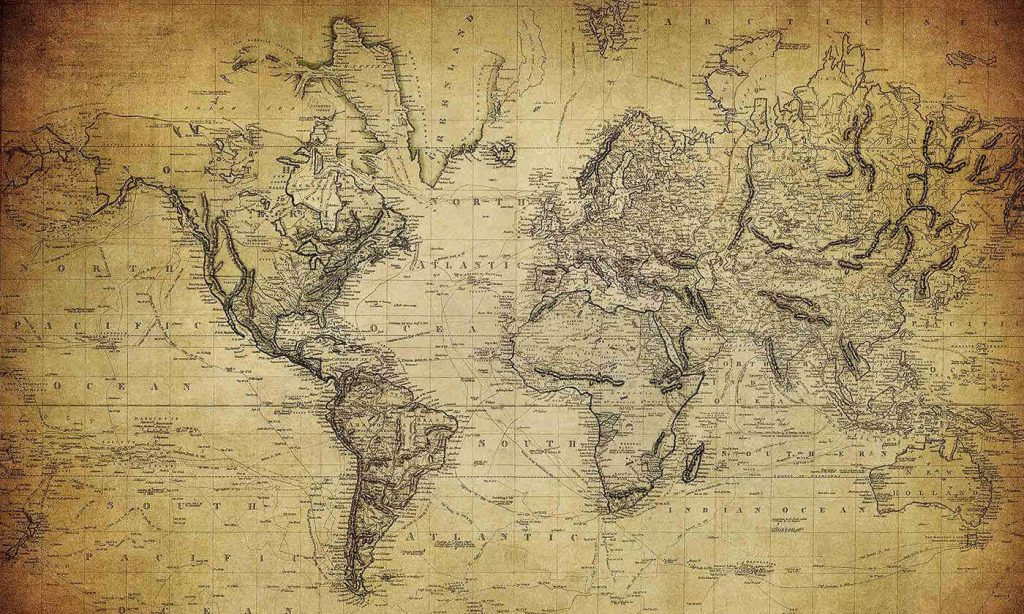Differences in the outward physical features of people from around the world make us appear very uniquely distinct from each other. However, our DNA, the hereditary material that carries information on how to build a human being, tells quite a different story. If you compare the DNA between two people from different parts of the world, 99.5% of the genetic code is identical. Just as the ‘out of Africa’ theory predicts, DNA studies have shown that all modern humans originated from a single population of people in Africa over 100,000 years ago and eventually spread around the world.
As humans migrated around the world, they had to adapt to differences in climate, life styles and natural disasters. Many of these adaptive changes are made possible due to the fact that mutations occur randomly and naturally over time in our genome. It is these randomly occurring genetic changes that can also be used as clues today to trace our ancient origins, allowing us to reconstruct the genetic family tree of mankind. Using differences in our DNA, geneticists have even identified the genetic mother and father of all modern humans, which they have named the ‘Mitochondrial Eve’ and ‘Y-Chromosome Adam’ who lived over 100,000 years ago.
Single nucleotide polymorphisms (SNPs) are the type of genetic marker that was used to find both ‘Mitochondrial Eve’ and ‘Y-Chromosome Adam’. Nucleotides are the building blocks of DNA throughout our genome and a SNP occurs when there is a variation at just a single nucleotide. SNP markers have a very slow mutation rate, making them useful for tracking genetic changes that happened more than 1,000 years ago in order to trace ancient ancestry. There is a second genetic marker, known as a short tandem repeat (STR), that has a faster mutation rate, so is useful for tracing more recent ancestry and looking for long lost family members.
Both SNPs and STRs occur in all the autosomal chromosomes and the X and Y sex chromosomes, but it is the SNP and STR markers found in the Y-chromosome which are useful for tracing paternal ancestry. Both women and men inherit an X-chromosome from their mother. Daughters inherit a second X-chromosome from their father, while sons inherit a Y-chromosome from their father. Markers found on the Y-chromosome are passed down from father to son and can be used to trace back the patrilineal ancestry all the way back to the genetic forefather of all modern men – the ‘Y-Chromosome Adam’. Maternal ancestry can also be traced, but this is through a different analysis of mitochondrial DNA.
The first tree for the Y-chromosome was made in 2002 by the Y-chromosome Consortium, a group of scientists interested in mapping the evolutionary history of the Y-chromosome. An evolutionary tree is like a family tree – it shows all the different families that arise from a single person. Using genetic data from the Y-DNA analyses, scientists have generated a patrilineal ancestry of all modern men with the ‘Y-Chromosomal Adam’ at the root of the tree.
The major branches of the tree are called haplogroups identified by letters (A to T). Haplogroups can be thought of as ancient family groups that existed thousands of years ago. These family groups were defined based on Y-DNA SNP profiles and most haplogroups have a geographical location of origin. For example, haplogroup A is largely restricted to Africa whereas haplogroup F may have originated in South Asia. Haplogroups can be further divided into finer sub-branches known as subclades.
Finding out what Y-DNA haplogroup you belong to using Y-DNA marker testing allows you to retrace the steps of your ancient paternal ancestors and take a journey through time. A Y-DNA STR analysis is the first step in the determining your Y-DNA haplogroup. Often this Y-DNA STR is all that is required to accurately determine your haplogroup. Y-DNA STR analyses also have the benefit of providing data on more recent ancestors, and might even show that you are related to a famous person! Additional analyses of Y-DNA SNPs can also be conducted to confirm your haplogroup and determine which subclade you belong to. As more Y-DNA sequences become available, the Y-chromosome tree keeps expanding, and maybe scientists will one day be able to tell the entire story of our ancient origins.
DNA Ancestry Project Features
Ancestry Test
Mitochondrial DNA sequencing
Y-DNA STR fragment analysis
Autosomal STR fragment analysis
Advanced ethnic origins report
Recent ancestry analysis
Ancient ancestry analysis
DNA Ancestry Projects
Relationship match
Relationship confirmation









